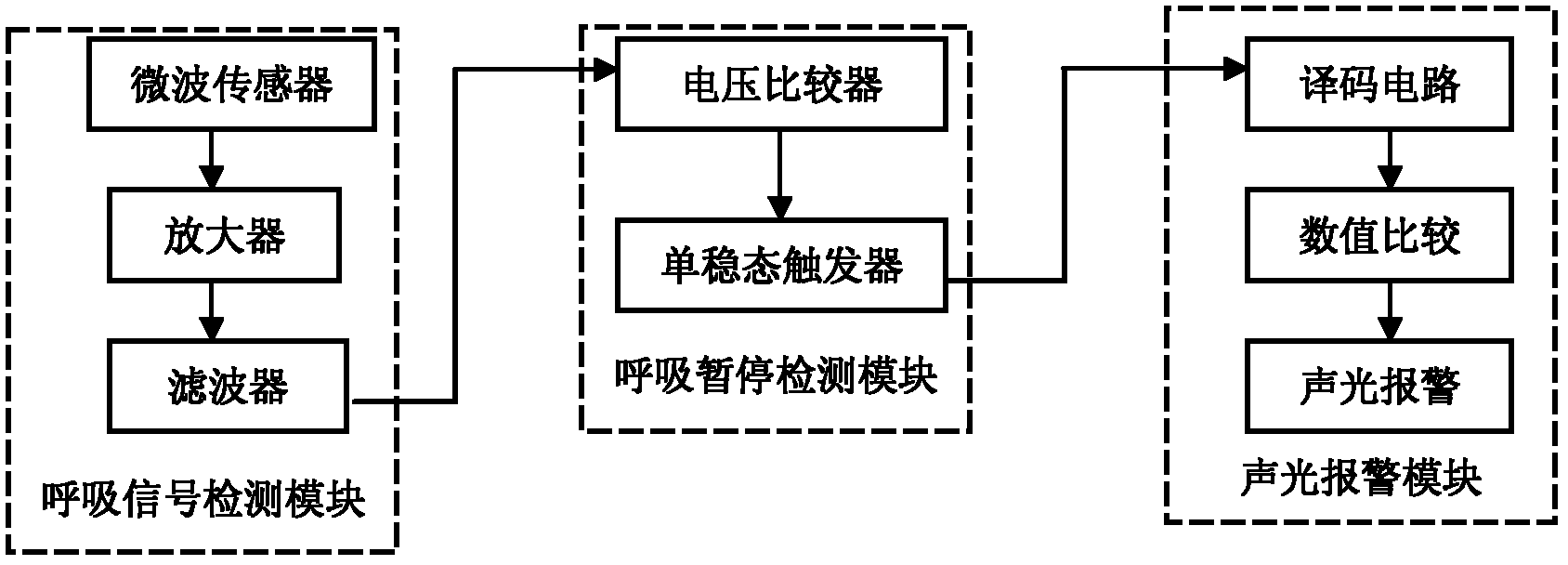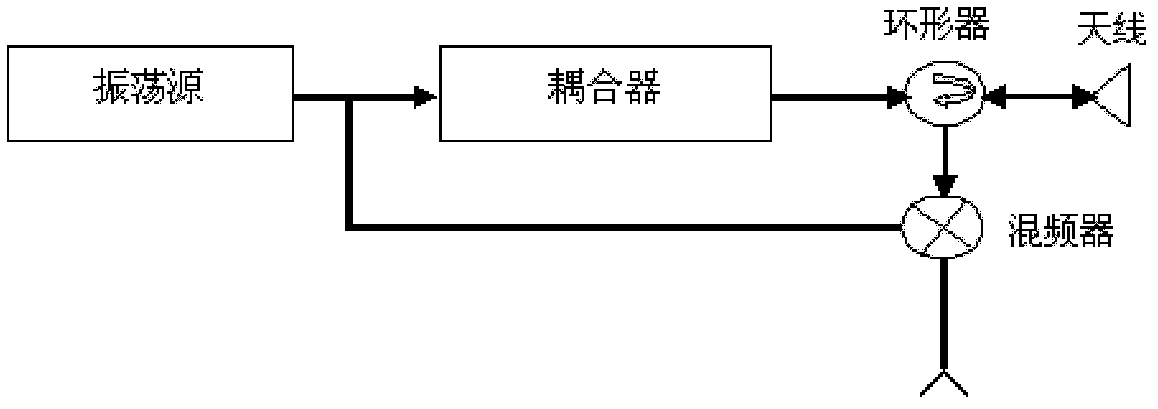Wireless monitoring device for infant apnea
A wireless monitoring device and apnea technology, applied in the evaluation of respiratory organs and other directions, can solve the problems of easily obstructing the breathing passage of infants, restraint of infants, etc., and achieve the effects of low false alarm rate, accurate detection and strong resolution
- Summary
- Abstract
- Description
- Claims
- Application Information
AI Technical Summary
Problems solved by technology
Method used
Image
Examples
Embodiment Construction
[0026] Such as figure 1 As shown, a wireless monitoring device for infant apnea includes a respiratory signal detection module that transmits microwave signals to detect the infant's breathing condition, and compares the detected respiratory signal and performs frequency conversion with an apnea detection module that compares with a set threshold And the sound and light alarm module that triggers the alarm.
[0027] Among them, the breathing signal detection module includes a microwave sensor. The microwave sensor transmits a microwave signal with a frequency of 24 GHz to the baby's chest wall, and receives the microwave signal reflected by the baby's chest wall, and outputs it to the signal amplifier. After the signal amplifier amplifies the breathing signal, it is output to the filter Apnea detection module. The microwave signal emitted by the microwave sensor directly irradiates or penetrates clothes to the baby's chest wall. The micro-movement of the baby's chest wall caused ...
PUM
 Login to View More
Login to View More Abstract
Description
Claims
Application Information
 Login to View More
Login to View More - R&D
- Intellectual Property
- Life Sciences
- Materials
- Tech Scout
- Unparalleled Data Quality
- Higher Quality Content
- 60% Fewer Hallucinations
Browse by: Latest US Patents, China's latest patents, Technical Efficacy Thesaurus, Application Domain, Technology Topic, Popular Technical Reports.
© 2025 PatSnap. All rights reserved.Legal|Privacy policy|Modern Slavery Act Transparency Statement|Sitemap|About US| Contact US: help@patsnap.com



